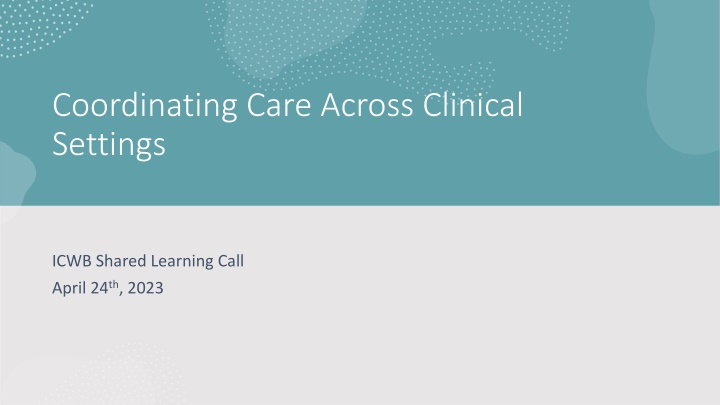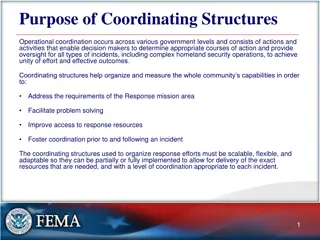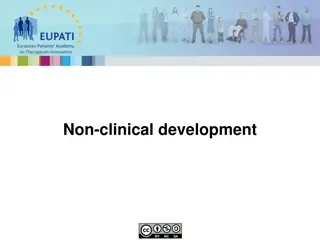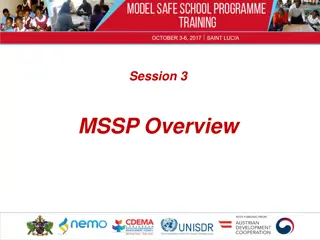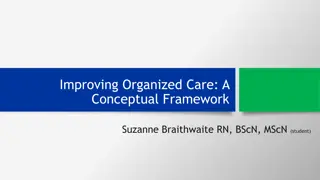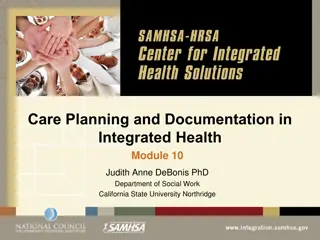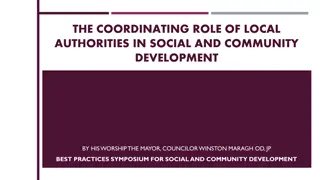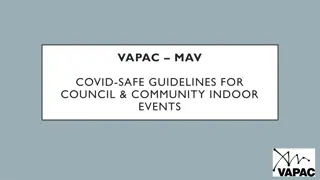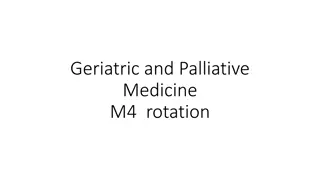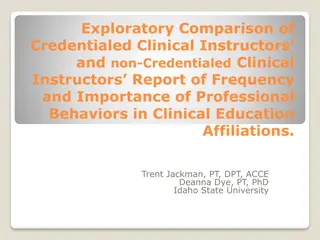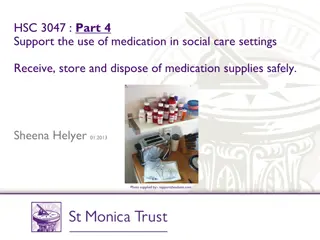Coordinating Care Across Clinical Settings: Implementation of Plans of Safe Care
Explore the significance and implementation of Plans of Safe Care (POSC) during the prenatal period to enhance coordination between inpatient and outpatient care settings. Understand the components of POSC, such as physical and behavioral health, infant development, and family support. Dive into the Colorado Plans of Safe Care, mandated by the Comprehensive Addiction and Recovery Act (CARA) of 2016. Learn about the involvement of multidisciplinary teams in developing POSC and the focus on physiological readiness of infants, discharge planning, follow-up care, and parent/caregiver education.
Download Presentation

Please find below an Image/Link to download the presentation.
The content on the website is provided AS IS for your information and personal use only. It may not be sold, licensed, or shared on other websites without obtaining consent from the author.If you encounter any issues during the download, it is possible that the publisher has removed the file from their server.
You are allowed to download the files provided on this website for personal or commercial use, subject to the condition that they are used lawfully. All files are the property of their respective owners.
The content on the website is provided AS IS for your information and personal use only. It may not be sold, licensed, or shared on other websites without obtaining consent from the author.
E N D
Presentation Transcript
Coordinating Care Across Clinical Settings ICWB Shared Learning Call April 24th, 2023
Review Plan of Safe Care components Discuss implementation of POSC during prenatal period Explain how prenatal POSC creation is patient- centered and improves coordination between inpatient and outpatient care settings Brainstorm ways of connecting OP and IP care settings on an ongoing basis, and discuss one new strategy implemented at UCH Objectives
Plan of Safe Care A Plan of Safe Care is meant to be a community safety net for families affected by substance use. Ideally, the plan is established during pregnancy, prior to child welfare involvement and the plan is developed by a multidisciplinary team. Plans of Safe Care include the following elements: Physical health (postpartum care, support with breastfeeding, medication and pain management) Behavioral health (engagement, treatment, recovery supports and retention; treatment for partner/other family members) Infant health and development (high-risk follow-up care, with referral to specialty care; developmental screening and early intervention services; early care and education programs) Parenting/family support (coordinated case management; home visiting/Head Start; Housing, employment support, child care and transportation)
What is the Colorado Plans of Safe Care? The Comprehensive Addiction and Recovery Act (CARA) of 2016 requires state child welfare systems develop a Plans of Safe Care to address the needs of infants who are identified as affected by substance abuse, experience withdrawal symptoms, or have fetal alcohol spectrum disorders (FASD). It also stipulates the development of a services plan for the infant and their family/caregiver to ensure the safety and well-being of infants following the release from the health care provider. What is included in the Colorado Plans of Safe Care? Physiological Readiness of the Infant The impact of substance exposure on the infant and identifies the need for special care, medical treatment or pharmacological care. Discharge Planning/Consultation Nutritional and medical care needs and supplies, in-home caregivers, community resources, emergency care and transportation and assesses for safety of the home and financial resources. Follow-up Care Coordination and follow-up with PCP, pediatrician, treatment provider, counselor, home nursing care, housing, food and parenting resources. Parent/Caregiver Education Readiness of parent/caregiver to care for infant, education and skills needed to care for the infant and identifies support system.
Who is Involved in Developing the Colorado Plans of Safe Care (PoSC)? The PoSC is developed with the input of a multidisciplinary-team before the mother s discharge from the hospital. According to best practices, the PoSC should be started prenatally and serve as a living document throughout the pregnancy and after birth. If that is not possible, the PoSC must be developed after birth and completed before the mother s discharge. This team may include: Medical staff Treatment providers Mental health experts Early childhood staff Child welfare Others: Probation or Parole Officers, community health case managers, religious or spiritual supports, etc Get Releases of Information and Save names and contact info in Plan of Safe Care Document! Patients have the right to revoke Releases of Information at any time, as well as specify what information is ok to share with whom
Physical Health: medication optimization, establishment with primary care (even while receiving prenatal care if not one in the same), NFP/Home visitation programs Behavioral Health: establishment with treatment services, stabilization in integrated setting connection to long term treatment services, Peer Support Services, home visitation services Prenatal POSC Development Infant Health and Development: introducing Early Intervention: what and why, establishing with pediatrician/family medicine prior to delivery to strengthen SEN warm hand off Parenting/Family Services: HOUSING, TANF, SNAP, WIC, transportation, parenting classes, Circle of Parents,
Maslows Hierarchy of Needs
UCH PeAR Collaborative Committee
Includes: Outpatient prenatal care providers (MD, PA, CNM) Outpatient RN Care Management Outpatient OB SW Outpatient Integrated Behavioral Health/Psychology/Psychiatry Inpatient Mom-Baby RN Manager Inpatient SW Inpatient Peds/NICU MD, NP Inpatient Integrated Psychology/Psychiatry Inpatient Addiction Medicine Consult Team Lactation Format: Monthly recurring meeting policy, workflow, implementation updates Patient case discussion and care planning To Come: Shared Epic Patient List PeAR Collaborative Committee
Discussion Questions Thank you!
